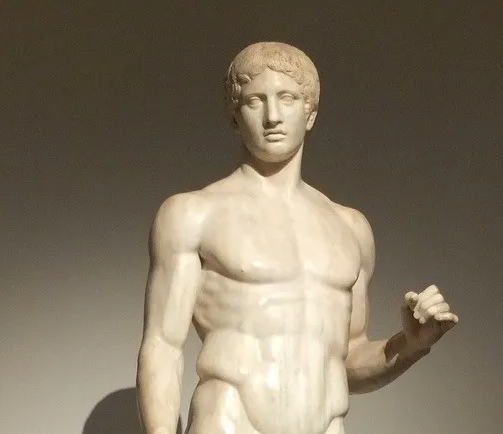Greek sculpture is an important part of classical art and is famous for its precise anatomical representation and ultimate pursuit of human body beauty. When we mention Greek statue sculpture, we not only think of the magnificent group of sculptures on the Acropolis of Athens, but also the stone statues standing quietly in countless museums. They are the essence of Greek art and culture.
Greek sculpture is known for its precise grasp of the proportions and dynamics of the human body. Artists demonstrated the strength and elegance of the human body through sculpture, particularly prominently in Muscular Greek Sculpture. This type of sculpture shows the strong physiques of Greek male heroes, such as Hercules and Apollo. Their muscle lines are depicted to be both real and ideal, showing a strength and beauty beyond ordinary people.
In addition, Greek statue sculptures are not only the pursuit of beauty, they also carry the functions of education and historical memory. In ancient Greece, sculpture was the pride of the city-state and part of civic education, inspiring people to pursue virtue and honor by showing examples of mythical heroes and historical figures. As witnesses of history, these sculptures still allow the world to feel a cultural dialogue across time and space when looking at them.
Technically, Greek sculptors often used marble and bronze as materials, using chiseling and casting techniques to transform cold stone and metal into lifelike works of art. Their handling of light and surface polishing have reached a superb level, allowing the sculptures to display different aesthetics and emotions under different lighting.
The influence of Greek sculpture was profound, with its style and techniques influencing the entire Roman Empire and even European art during the Renaissance. To this day, whether it is learning art or appreciating art, Greek statues and sculptures are an indispensable part. They are not only art in physical form, but also transmitters of spirit and culture.
In short, greek statue sculpture is a window to explore human art and culture. Through these sculptures, we can not only appreciate the unique insights of ancient Greece on beauty, but also feel the ancient Greeks’ profound thinking on life, the universe and human nature. . These sculptures, especially Muscular Greek Sculpture, are a valuable asset of Greek cultural heritage and continue to inspire artists and historians around the world.

